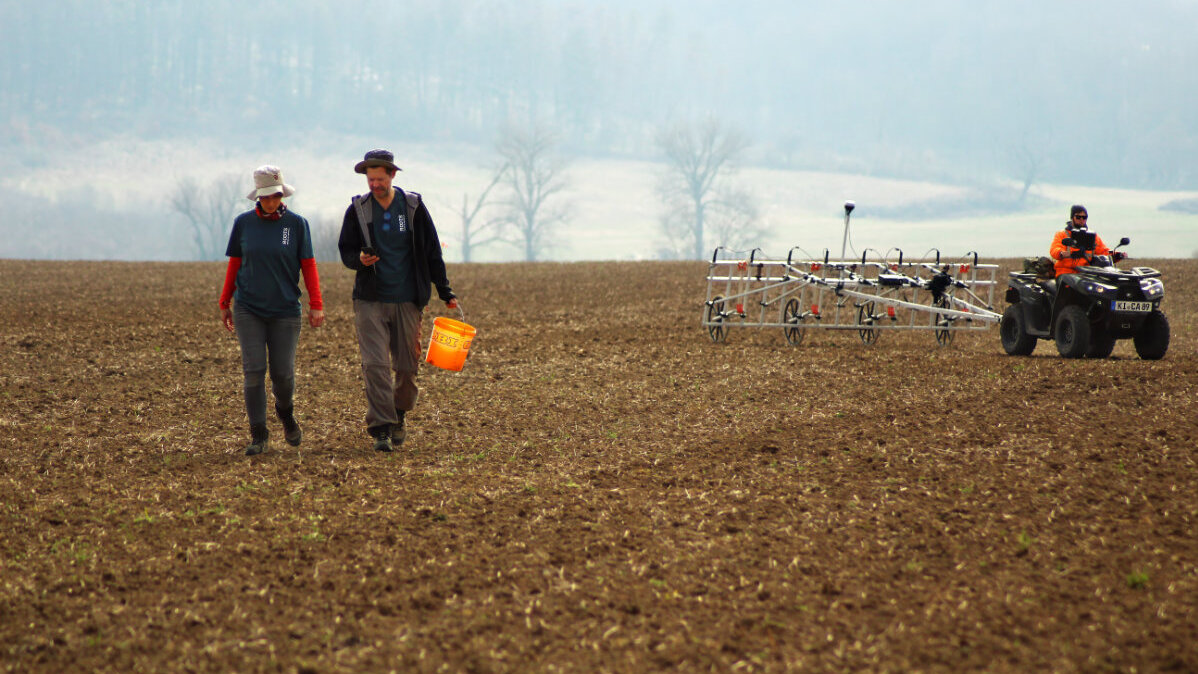Geophysics shows a 13 hectare settlement structure
The newly discovered settlement is located near the modern town of Jarkovac in the province of Vojvodina. Using geophysical methods, the team was able to completely record its extent in March of this year. It covers an area of eleven to 13 hectares and is surrounded by four to six ditches.
»A settlement of this size is spectacular. The geophysical data also gives us a clear idea of the structure of the site 7,000 years ago,” says ROOTS doctoral student and co-team leader Fynn Wilkes.
In parallel to the geophysical investigations, the German-Serbian research team also systematically searched the surrounding surfaces for finds. This surface material suggests that the settlement was a dwelling place of the Vinča culture, which dates back to between 5400 and 4400 BC.
However, there are also strong influences from the regional Banat culture. “This is also remarkable, as only a few settlements with material from the Banat culture are known from what is now Serbia,” explains Fynn Wilkes.
Investigation of circular ditches in Hungary
During the same two-week research campaign, the Cluster of Excellence team also examined several Late Neolithic circular ditches in Hungary together with partners from the Janus Pannonius Museum in Pécs. These so-called roundels are assigned to the Lengyel culture (5000/4900-4500/4400 BCE). The researchers also used geophysical technologies as well as systematic inspections of the surrounding area.
Thanks to the combination of both methods, the researchers were able to differentiate the eras represented at the individual sites more clearly than before. »This enabled us to reassess some of the already known sites in Hungary. For example, sites previously referred to as late Neolithic circular ditches turned out to be much younger structures,” explains co-team leader Kata Furholt from the CAU’s Institute of Prehistory and Protohistory.
New insights into the distribution of wealth and knowledge in the Neolithic period
The highlights of the short but intensive field work in Hungary included the reassessment of a settlement that had previously been dated to the late Neolithic period, which can most likely be assigned to the Late Copper Age and Early Bronze Age Vučedol culture (3,000/2,900 – 2,500/2,400 BCE), as well as the Complete documentation of a late Neolithic circular ditch in the municipality of Vokány.
»Southeastern Europe is a very important region for answering the question of how knowledge and technologies spread in early periods of human history and how this was related to social inequalities. This is where new technologies and knowledge such as metal processing first appeared in Europe. With the newly discovered and reclassified sites, we are collecting important data for a better understanding of social inequality and knowledge transfer,” summarizes Professor Martin Furholt.
The results are incorporated, among other things, into the interdisciplinary project “Inequality of Wealth and Knowledge” of the Cluster of Excellence ROOTS, which deals with these questions. The evaluation is ongoing.
